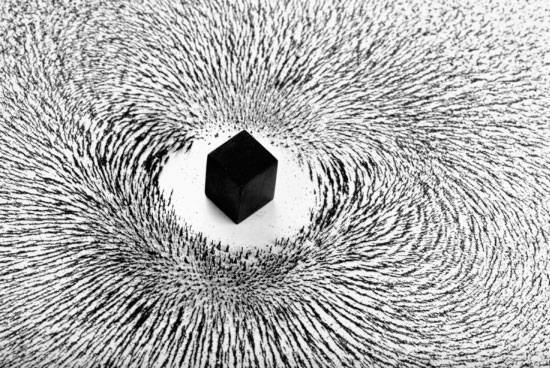Magnetic Field
A Magnetic Field is a physical field that is based the magnetic effect of electric currents and magnetic materials.
- Context:
- It can be modeled with a Vector Field Model (such as a vector field function instance).
- Example(s):
- the field around a specific magnet, such as

- the field around a specific magnet, such as
- Counter-Example(s):
- See: Magnetic Circuit, Electric Current, Magnet, Vector Field, Pseudo Vector, Rotational Speed, Ampere, Meter, Tesla (Unit), Newton (Unit), Lorentz Force, Maxwell's Equations.
References
2015
- (Wikipedia, 2015) ⇒ http://en.wikipedia.org/wiki/magnetic_field Retrieved:2015-11-20.
- A magnetic field is the magnetic effect of electric currents and magnetic materials. The magnetic field at any given point is specified by both a direction and a magnitude (or strength); as such it is a vector field.[nb 1] The term is used for two distinct but closely related fields denoted by the symbols 'B and H, where H is measured in units of amperes per meter (symbol: A·m−1 or A/m) in the SI. B is measured in teslas (symbol:T) and newtons per meter per ampere (symbol: N·m−1·A−1 or N/(m·A)) in the SI. B is most commonly defined in terms of the Lorentz force it exerts on moving electric charges.
Magnetic fields can be produced by moving electric charges and the intrinsic magnetic moments of elementary particles associated with a fundamental quantum property, their spin. In special relativity, electric and magnetic fields are two interrelated aspects of a single object, called the electromagnetic tensor; the split of this tensor into electric and magnetic fields depends on the relative velocity of the observer and charge. In quantum physics, the electromagnetic field is quantized and electromagnetic interactions result from the exchange of photons.
In everyday life, magnetic fields are most often encountered as a force created by permanent magnets, which pull on ferromagnetic materials such as iron, cobalt, or nickel, and attract or repel other magnets. Magnetic fields are widely used throughout modern technology, particularly in electrical engineering and electromechanics. The Earth produces its own magnetic field, which is important in navigation, and it shields the Earth's atmosphere from solar wind. Rotating magnetic fields are used in both electric motors and generators. Magnetic forces give information about the charge carriers in a material through the Hall effect. The interaction of magnetic fields in electric devices such as transformers is studied in the discipline of magnetic circuits.
- A magnetic field is the magnetic effect of electric currents and magnetic materials. The magnetic field at any given point is specified by both a direction and a magnitude (or strength); as such it is a vector field.[nb 1] The term is used for two distinct but closely related fields denoted by the symbols 'B and H, where H is measured in units of amperes per meter (symbol: A·m−1 or A/m) in the SI. B is measured in teslas (symbol:T) and newtons per meter per ampere (symbol: N·m−1·A−1 or N/(m·A)) in the SI. B is most commonly defined in terms of the Lorentz force it exerts on moving electric charges.
Cite error: <ref> tags exist for a group named "nb", but no corresponding <references group="nb"/> tag was found